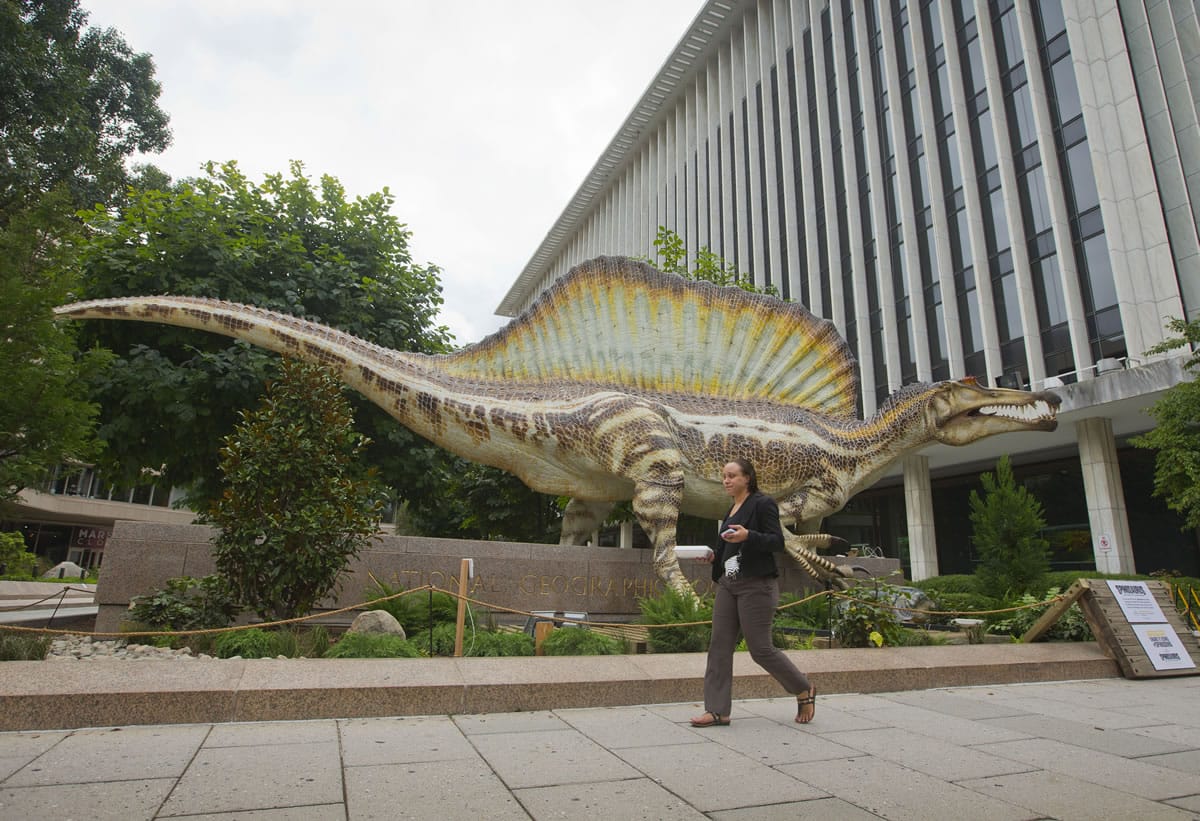WASHINGTON — Picture the fearsome creatures of “Jurassic Park” crossed with the shark from “Jaws.” Then super-size to the biggest predator ever to roam Earth. Now add a crocodile snout as big as a person and feet like a duck’s.
The result gives you some idea of a bizarre dinosaur scientists unveiled Thursday.
This patchwork of critters, a 50-foot predator, is the only known dinosaur to live much of its life in the water.
The beast, called Spinosaurus aegyptiacus, was already known to scientists from a long-ago fossil discovery, but most of those bones were destroyed in Germany during World War II. Now, 70 years later, a new skeleton found in Morocco reveals that the beast was far more aquatic than originally thought.
Spinosaurus had a long neck, strong clawed forearms, powerful jaws and the dense bones of a penguin. It propelled itself in water with flat feet that were probably webbed, according to a study released Thursday by the journal Science. The beast sported a spiny sail on its back that was 7 feet tall when it lived 95 million years ago.
“It’s like working on an extraterrestrial or an alien,” study lead author Nizar Ibrahim of the University of Chicago said, while standing in front of a room-sized reconstruction of the skeleton at the National Geographic Society, which helped fund the research.
“It’s so different than anything else around,” he said.
Ibrahim described the creature as “so bizarre it’s going to force dinosaur experts to rethink many things they thought they knew about dinosaurs.”
Scientists had thought that all dinosaurs stuck to the land, with occasional brief trips into the water. But the new skeleton shows clear evidence of river and lake living: hip bones like a whale’s, dense bones that allowed it to dive for food, and nostrils positioned high on the skull, allowing Spinosaurus to mostly submerge.
It could walk and would probably nest on land, but on land it moved more awkwardly than in water, said study co-author Paul Sereno of the University of Chicago. It lumbered on its two hind feet because its powerful forelegs with sharp curved claws were designed more for killing than walking, he said.
Sereno called it “an evolutionary experiment going into the water.”



